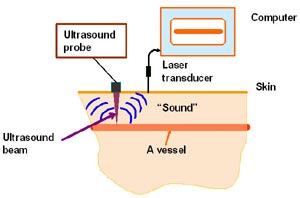
One of the most unusual, yet persistent, problems television broadcasters face is what Tom Grimes calls “unitentional defamation.”
“This takes place when TV news viewers’ memory plays tricks on them and they end up ’remembering’ the facts of a TV news story in a way that defames an innocent person portrayed in the news story,” said Grimes, the Ross Beach research chair in the A.Q. Miller School of Journalism and Mass Communications at Kansas State University.
“Peopl

Technology has moved beyond wireless and pocketable to wearable. Clothes and accessories can serve a wider range of purposes than we’re currently accustomed to. Wearable technology produced by a Finnish smart clothing R&D center and its partners is selling well.
The smart clothing and wearable technology concepts are based on a permanent integration of clothing and technology. Clothes can be made ‘smart’ by adding intelligent features such as information technology and by using special fibre

Leeds scientists are to investigate the birthplace of life – sea water billions of years old – with new high-tech laser equipment, the first of its kind in the UK.
The ancient sea water is found trapped in tiny pockets – called fluid inclusions – within crystals such as emerald and quartz. The oldest known examples are found in the rock 3.8 billion years old – the oldest land on the planet. Although liquid water is believed to have existed on earth over 4 billion years ago, obtaining samples

The lack of a special protein crucial to cell growth and development may help cancer cells proliferate, new research suggests.
Cells without this protein – E2F3 – are usually rendered genetically unstable. In most cases, such instability would either kill a cell or keep it from growing. Yet sometimes mutations alter cells in such a way that they are able to thrive and multiply, creating tumors.
“In cancer, the absence or loss of E2F3 may be a double-edged sword,” said Gustav

Vessels are important parts of our body. Their function is critical to our well-being. For years, doctors have tried various tools to take pictures of arteries that would help them in diagnosing or preventing diseases. This has not been an easy task, however, and sometimes they have to use imaging methods that may have some harmful side effects. It has always been a challenge to take clear pictures of vessel without the negative side effects. Here, we suggest a new way that may help us to achieve th

Finding is a significant step toward new insights for designing combination chemotherapy
Investigators at St. Jude Children’s Research Hospital have discovered numerous genes that alter their level of activity in characteristic patterns in response to specific chemotherapy treatments. The genes were identified in the leukemia cells of children undergoing chemotherapy for acute lymphoblastic leukemia (ALL).
The researchers say this finding is a significant step in the emergin

– new calculation confirms standard model of particle physics. Contribution of hadronic vacuum polarization determined with unprecedented accuracy. The magnetic moment of the muon is an important precision parameter for…
Technique may prevent formation of unwanted waves that siphon off needed energy. Heating plasma to the ultra-high temperatures needed for fusion reactions requires more than turning the dial on a…

An international team of astronomers, led by researchers from the Astronomical Observatory of the University of Warsaw, have identified a new class of cosmic X-ray sources. The findings have been…

How deubiquitinases USP53 and USP54 cleave long polyubiquitin chains and how the former is linked to liver disease in children. Deubiquitinases (DUBs) are enzymes used by cells to trim protein…

Conceptual blueprint to analyze experimental catalyst data. Machine learning (ML) models have recently become popular in the field of heterogeneous catalyst design. The inherent complexity of the interactions between catalyst…

Antibody that Neutralizes Inhibitory Factors Involved in Nerve Regeneration Leads to Enhanced Motor Function after Acute Spinal Cord Injury. Researchers at 13 clinics in Germany, Switzerland, the Czech Republic and…

How simulations help manufacturing of modern displays. Modern materials must be recyclable and sustainable. Consumer electronics is no exception, with organic light-emitting diodes (OLEDs) taking over modern televisions and portable…

“Neurons that fire together, wire together” describes the neural plasticity seen in human brains, but neurons grown in a dish don’t seem to follow these rules. Neurons that are cultured…

The quest for sustainable energy solutions has been a major focus of scientific research for decades. Solar energy, a clean and renewable source, has emerged as a promising alternative to…

With a processing speed a billion times faster than nature, chip-based laser neuron could help advance AI tasks such as pattern recognition and sequence prediction. Researchers have developed a laser-based…

New technology could remotely identify various types of plastics, offering a valuable tool for future monitoring and analysis of oceanic plastic pollution. Researchers have developed a new hyperspectral Raman imaging…

Artificial Intelligence (AI) has established a strong presence across industries, large and small. The “VoBaKI” research project has empowered small and medium-sized enterprises (SMEs) with an innovative tool to independently…